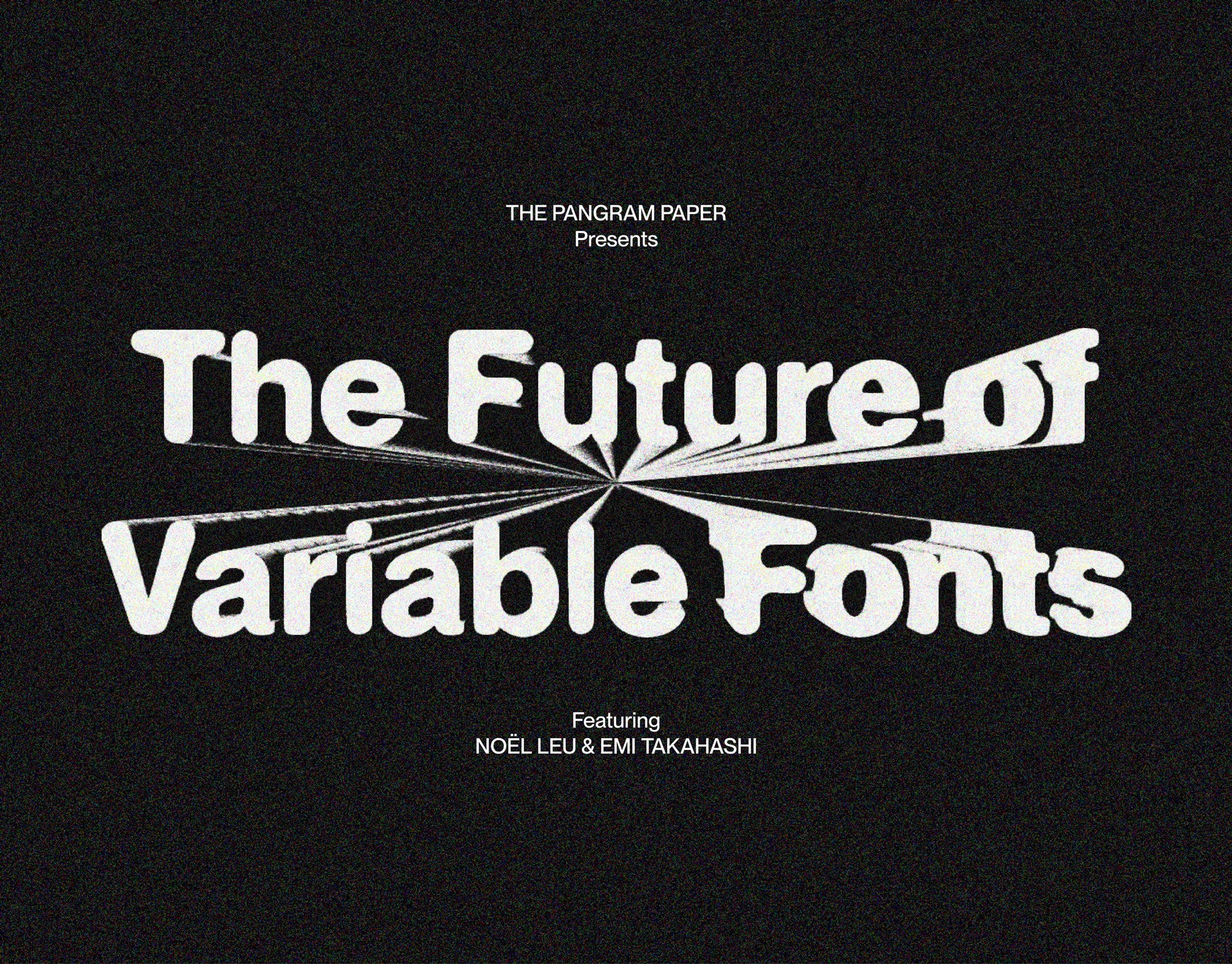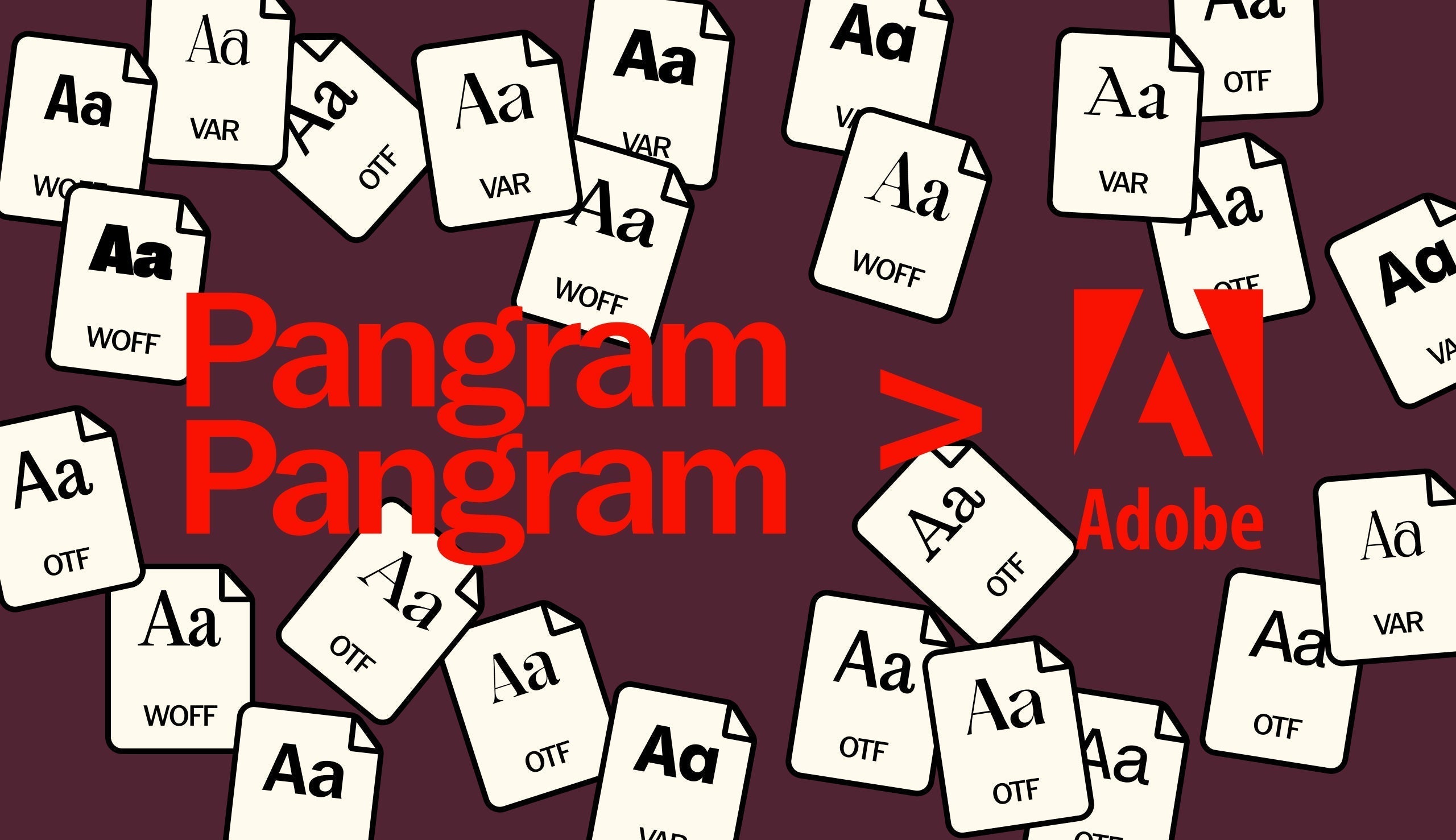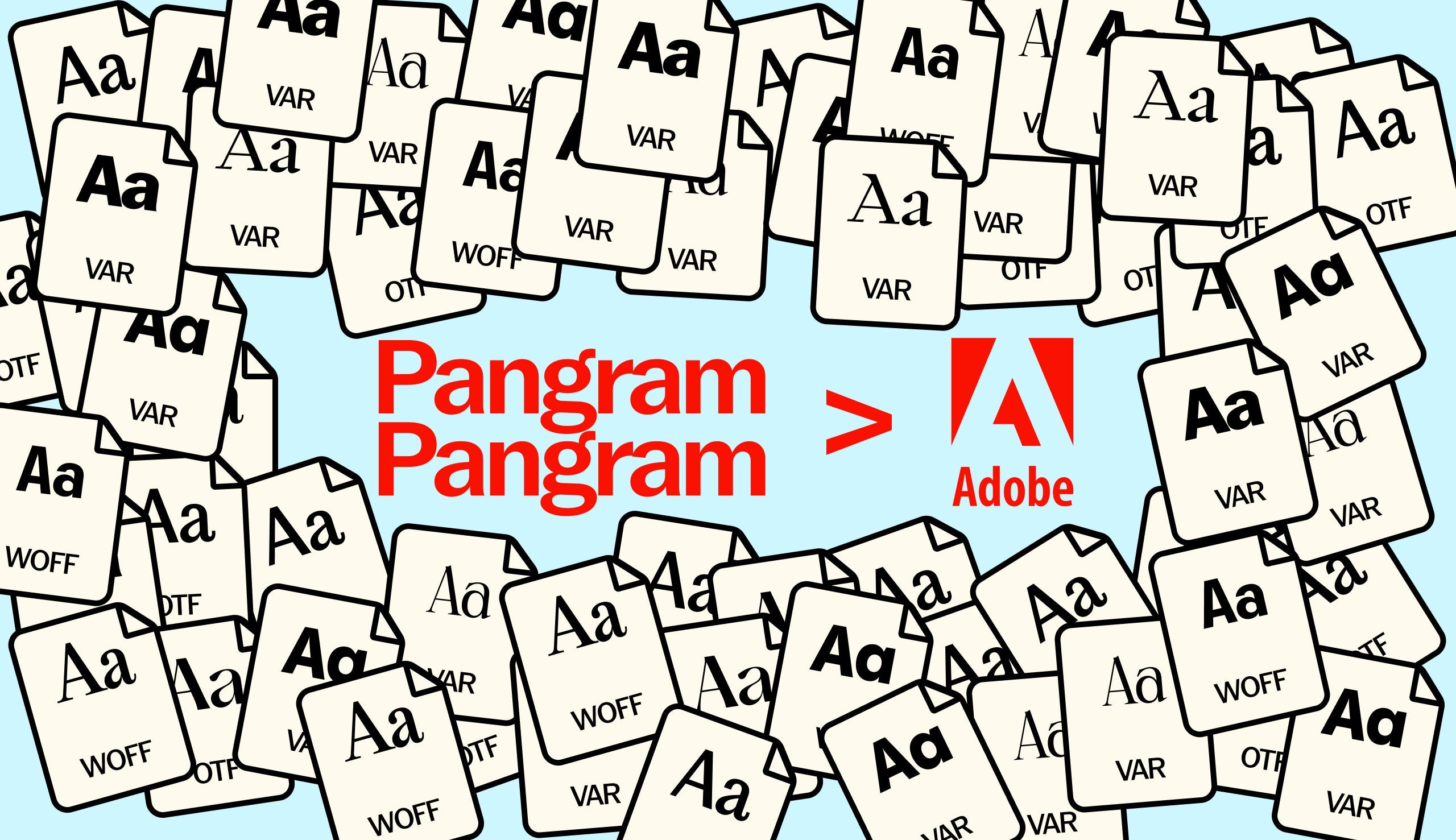As we’ve discussed before on The Pangram Paper, variable fonts have an undeniable presence in, and influence on, the contemporary design scene. Scrolling endlessly through Instagram, It feels like everyone is using them, and if you're not using one, you're probably designing one (or thinking about it anyway). Will these prolific heights continue, and are they deserved? Whilst we've looked previously at the best variable fonts available right now, it's even more interesting to look forward – what will the future of variable fonts look like?
The introduction and popularisation of variable font technology undoubtedly marks a fresh chapter in type design’s history, building on the centuries of analogue technology predating it. The question arises, however, whilst it is indicative of the contemporary creative scene, does it proffer its future?
“I’m not sure if the technology is actually that groundbreaking or even a new significant development,” Type Designer and Grilli Type’s Co-Founder Noël Leu tells us, “there have been attempts before to introduce font formats like Multiple Master (MM) that enables live interpolation in font files,” he explains, recalling the file formats lack of widespread adoption at the time. “That was also before a wider adaption of fonts in web design,” he contextualises, noting the format’s contrast with variable fonts, “the most interesting aspect of Variable Font technology is the capability to animate fonts easily,” noting the beneficial, effectively interplay between type, web and responsive layouts – cementing their recent development and contemporary significance in the type design scene. “For me,” Tkaronto and Toronto-based Japanese-French-Canadian artist and type designer Emi Takahashi adds, discussing the technology’s contemporary relevance, “the greatest strength in the development of variable fonts is their increased level of access to designers and the greater public,” in terms of both their application and design.

“In the past couple of years, this relatively new technology has been gaining momentum,” she suggests, “as various key software, browsers, and platforms have progressively adopted and refined their variable font support,” spearheaded by type creation software like Glyphs and RoboFont helping make the technology more efficient. “Greater access to tools that enable variable font creation,” Emi explains, alongside the increasing amount of supportive applications and platforms, “directly enriches the type design scene, making it more open and diverse,” noting the expanding visibility and accessibility of the field that was previously run but a relatively small number of practitioners. “This will hopefully bring new voices and fresh perspectives to the variable type design scene,” Emi suggests, bringing to attention some of the most exciting uses of variable fonts in recent years.

Going beyond the conventional parameters laid by OpenType, such as weight, width and slant, Emi remarks, “I’m quite interested in the conceptual and poetic potential of variable font axes,” intrigued by the freedom offered, “where the technology is used as a tool for experimentation, play, or exploring a particular subject, idea, or story.” As explored in the simmer workshop she hosted, Emi embraced this exploration of variable technology and applied it to a more abstract typography concept – objects. “Taking an object as a starting point,” she recalls, “participants were asked to design a ‘superglyph’ which translated the object’s formal, textural, emotional, and symbolic qualities,” into a single variable axis. “It was exciting to see how each participant interpreted the assignment, some of them even without the use of type design software,” Emi adds, “Questions that fuelled their thinking included: how many layers of meaning can we embed into a variable font or glyph? Is it possible to tell a story simply through conceptual variable axes?”



This intriguing, poetic investigation into the impact of variable technology, as Emi suggests, has led to fields and processes beyond type design, raising Eino Korkala and Daniel Coull’s Climate Crisis as an example. “Climate Crisis features a temporal axis where the letterforms shrink and mimic real data of the Arctic sea ice melting,” Emi explains, “whilst ‘Variable Emojis’ by Hannah Witte uses the variable axes change physical characteristics of human emojis,” she adds, giving a further example, “such as ‘hair’, ‘curl’ and ‘lips’.”





Beyond this, however, arguably, the core function of the technology in question is firmly rooted in the evolution of typographic efficiency and flexibility. “Variable font technology is growing into being a tool to design glyphs, icons, and emojis with more freedom and greater flexibility,” as Emi suggests, something Noël recalls as a current endeavour of his own. “At Grilli Type, we’re currently working on a typeface with optical sizes, so the typeface will automatically and seamlessly adapt to the size it’s set in,” Noël explains, contextualising contemporary digital type design within its analogue history. “In the age of lead typefaces, fonts were designed specifically for different sizes,” he describes, “and with the digitalisation of typefaces this aspect initially got lost,” whereby previous static type formats made it undesirable and inconvenient to have many multiple versions of a single font. Then, citing Just Another Foundry’s helpful text on the matter as an intriguing place for those interested in the topic, Noël simply adds, “variable fonts easily enables the implementation of this aspect into contemporary type design.”


Looking ahead, Noël continues, “what will change is the perception of a typeface being a collection of static styles,” eventually reaching the point where typeface physicality is genuinely a historical relic. “Variable font technology helps to understand a typeface as a typographic space,” he suggests, claiming, “it’s what Adrian Frutiger envisioned with Univers back in the 50s finally fully realised,” whereby fonts have reached their ultimate versatility and practicality. “I don’t see a reason why it won’t become the predominant font format in the future,” Noël notes, and, as Emi suggests, the ‘spectacle’ of variable fonts isn’t quite the juggernaut it once was when the OpenType format was introduced in 2016 but has indeed changed its intention. “They are now being designed for a wide range of contexts, from pragmatic uses to more experimental endeavours,” she explains, offering creatives forward-thinking ways to approach type design and its application across printed and virtual spaces. “Now that the technology exists, there is no going back,” Emi remarks, “their fluid, multidimensional, and animated qualities allow type to take on a more active and central role,” not only creating space for type to be explored in more novel manners but expanding the place of type, in conjunction with other fields and disciplines.
That being said, only time will tell. As Noël puts it, “it’s hard to predict how current experimentations with Variable Font technology will affect future usage,” treating the technology more pragmatically, appreciating its role in typographic readability and legibility. “These still remain key aspects of typography down the line,” he concludes, “so maybe future designers might look back on the current very enthusiastic usage of Variable Font animations and gimmicks as a fad from the 2020s.












